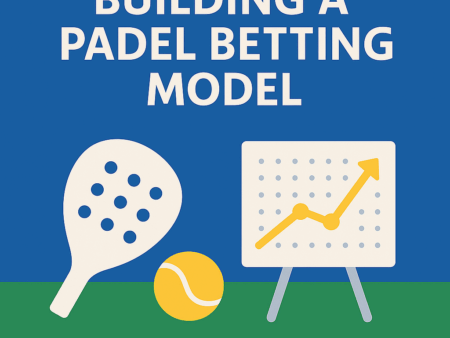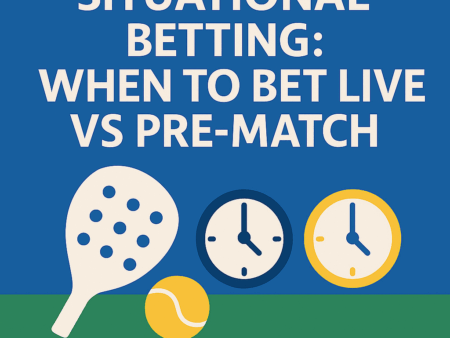
Momentum is one of the most powerful forces in padel — and one of the most overlooked. Because padel is a doubles sport built on rhythm, communication, and rally patterns, momentum can shift quickly and dramatically.
This guide shows you exactly how to read momentum, what signals to look for, and how to use momentum to make smarter predictions or in-match decisions.
🟦 What Is Momentum in Padel?
Momentum refers to the flow of control, confidence, and point dominance in a match.
When a team has momentum, they:
✔ control the net
✔ dictate rally patterns
✔ communicate confidently
✔ win Golden Points
✔ force the opponent into errors
Momentum is not luck — it is observable.
🟩 Why Momentum Matters
Momentum affects:
✔ match outcomes
✔ set swings
✔ tiebreak results
✔ Golden Point conversions
✔ emotional stability
If you can read momentum, you can:
→ predict comebacks
→ spot collapses early
→ identify when a favourite is in trouble
→ choose better live betting moments
🟨 The 5 Stages of Momentum in a Padel Match
Momentum shifts follow predictable phases.
1. Neutral Stage
- Both teams testing each other
- Long rallies, no pattern yet
2. Pressure Stage
- One team pushes forward
- More net control
- Opponent defending more than attacking
3. Breakthrough Stage
- The first major shift
- Golden Points appear
- One team gaining confidence
4. Dominance Stage
- A team takes full control
- Winning short rallies
- Controlling centre-court
5. Collapse Stage (for the losing team)
- Errors increase
- Poor body language
- Communication breaks down
Understanding these stages helps you predict match flow.
🟦 Key Signs Momentum Is Changing
Watch for these signals — they are extremely reliable.
✔ 1. Net Control Shifts
Whoever controls the net usually wins the point.
✔ 2. Winning Long Rallies
If a team wins 3+ long rallies in a row, momentum is shifting.
✔ 3. Golden Point Performance
Winning Golden Points → massive confidence boost.
✔ 4. Body Language Changes
Positive:
- Quick steps
- Loud communication
- Assertive net movement
Negative:
- Shoulders down
- Slow reactions
- Silence between points
✔ 5. Break Point Pressure
Teams that generate more break chances almost always take momentum.
🟩 Positive Momentum Indicators
A team gaining momentum usually shows:
✔ Faster speed between points
✔ Cleaner volley execution
✔ More successful lobs
✔ Opponents playing deeper and defensive
🟥 Negative Momentum Indicators
A team losing momentum often shows:
❌ More unforced errors
❌ Rushed bandejas/smashes
❌ Poor communication
❌ Giving up the net too easily
❌ Frustrated reactions
These signals appear before the scoreboard changes.
🟧 How to Use Momentum for Better Decisions
✔ 1. Predicting Comebacks
If a trailing team starts winning long rallies and controlling net → comeback incoming.
✔ 2. Spotting Collapses
If a favourite loses 2–3 Golden Points in a row → collapse risk.
✔ 3. Live Betting Advantage
Momentum gives bettors a massive edge.
- Enter bets before the scoreboard reflects the shift.
✔ 4. Reading Partnership Chemistry
Strong teams manage momentum better.
Weak teams crumble under pressure.
🟫 Practical Examples
Example 1:
Team A wins three long rallies + takes the net + wins Golden Point.
→ Momentum strongly in their favour.
Example 2:
Team B starts showing frustration, smashing too hard, and losing depth.
→ Momentum shifting away from them.
Example 3:
Team A saves break point + celebrates loudly.
→ Huge momentum swing.
🟦 Quick Momentum Checklist
Use this to read match flow instantly:
✔ Who controls the net?
✔ Who wins the long rallies?
✔ Who wins Golden Points?
✔ Whose body language is stronger?
✔ Who creates break chances?
✔ Who looks confident between points?
If one team dominates 3+ items → they have momentum.
🟩 Summary
Momentum drives padel match outcomes more than rankings or statistics. By learning to read:
- net control
- rally length
- body language
- Golden Points
- pressure patterns
you can predict shifts before they happen.
Understanding momentum makes you a smarter player and a more accurate analyst.
Next: Page 2 — How Weather Affects Padel Matches.


